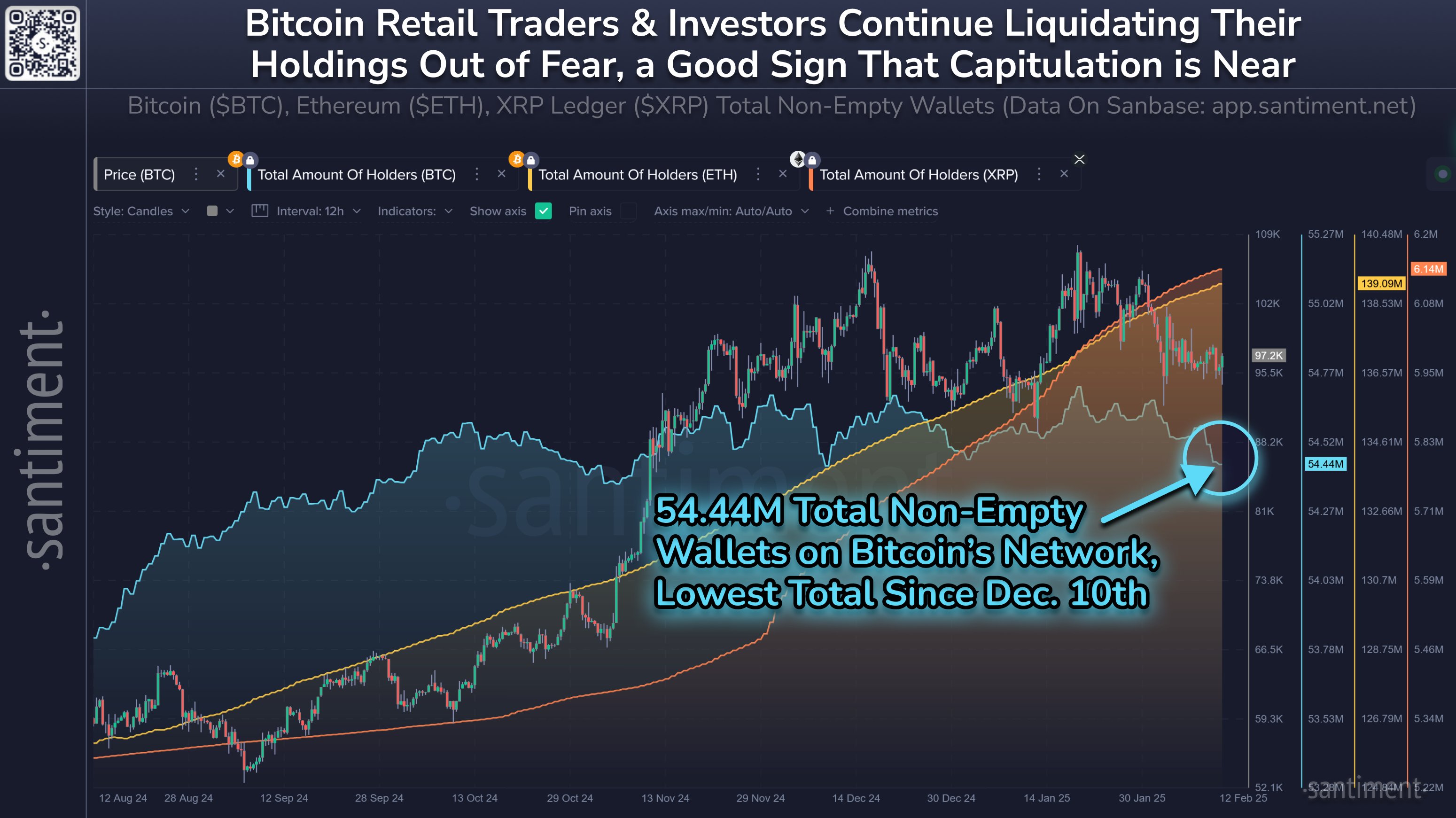
Bitcoin Wallet Strategy: Why Less Means More
Analytics from Santiment have observed a significant decrease in the number of non-empty addresses on the Bitcoin network. They attribute this to small holders liquidating their assets out of fear.
Santiment compares Bitcoin to Ethereum and Ripple, noting that these two cryptocurrencies are showing the opposite trend.
However, I believe Santiment's interpretation is incorrect:
- In Ethereum and Ripple, each new address corresponds to a new wallet.
- In Bitcoin, a single wallet can generate an unlimited number of addresses. Creating a new address for each incoming Bitcoin transaction is standard practice.
- Bitcoin transaction fees depend on the transaction's "weight," which is determined by the number of inputs and outputs used.
- That's why experienced Bitcoin users take advantage of low network fees to consolidate their coins stored across multiple addresses.
Here's how it works:
- A year ago, I had Bitcoin spread across 10 addresses, and the fee was 100 satoshis per virtual byte.
- Now, with fees regularly dropping to 1 satoshi per virtual byte, I can consolidate all my coins into a single address.
- Even if fees rise back to 100 satoshis when I need to send all my Bitcoin later, I'll pay significantly less for a transaction from one address compared to sending from 10 different addresses.
Remember when I recently told you that there were no queues for block inclusion? That's why fees are low now, making it the perfect time for consolidation transactions.
So I believe what we're seeing isn't Bitcoin holders acting out of fear, but rather smart management of their holdings.
Bitcoin holders have nothing to fear. They own the most reliable digital asset.
Want to join them? The easiest way to exchange any cryptocurrency for Bitcoin is through rabbit.io.













